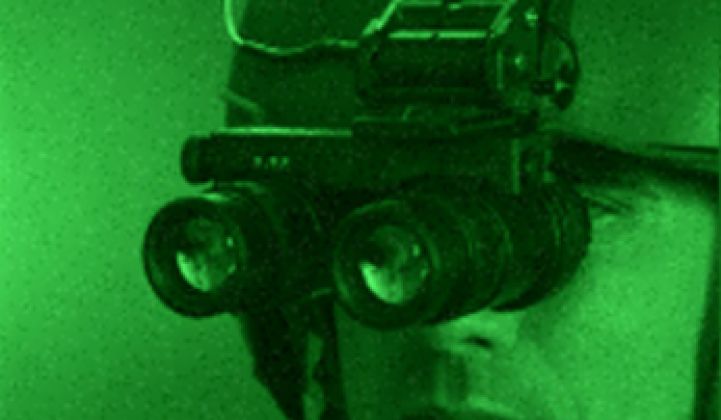Virtual auditing is like the night-vision goggle of energy efficiency, providing instantaneous clarity while others struggle in the dark.
Night vision may not be as good as seeing in the daytime, but it offers the ability to look at what was previously invisible. The same goes for virtual audits. They may not be as detailed as an on-site energy audit, but they can offer a glimpse of a building's energy profile before ever stepping foot inside.
That makes the tool a good fit for the military, which has roughly 300,000 buildings and a multi-billion tab for energy each year.
Retroficiency, the Boston-based virtual auditing firm, is set to deploy its software at 640 military buildings around the world -- providing the Army and Navy with an assessment of how their facilities are performing. Retroficiency will work with the energy services provider Sain Engineering Associates to provide the audits over the next year.
The partnership is a chance for Retroficiency to get deeper into the federal sector, where efficiency and renewables procurement are taking off under a mandate from the Obama administration.
"There's a huge opportunity in the government sector where there are very large portfolios of buildings and a very diverse set of data," said Retroficiency CEO and co-founder Bennett Fisher in an interview. "When you put those dynamics into play it will create a huge pipeline of efficiency projects."
Long before President Obama started issuing aggressive targets for energy performance in federal buildings, the military was taking the lead on procuring renewables, advanced biofuels and developing net-zero energy goals for its facilities.
As a result, virtual audits have become more important within the military and its related agencies. In 2012, Boston-based FirstFuel started working with the Department of Defense to implement zero-touch audits as part of an energy test bed initiative. And Charleston, S.C.-based SPARC also used its auditing software to uncover $3.5 million in energy savings at the Veterans Administration building in Washington.
Retroficiency's military deployment -- along with its recent outreach to small businesses and increasing number of utility partnerships -- could bring the company's energy monitoring reach to over 1 billion square feet globally through the end of the year. It will also give the company a new channel in the government sector, where half a million buildings await assessment.
"Solidifying this deal will really help us broaden our footprint and move deeper into the federal sector," said Fisher.
Virtual audits have become one of the fastest-growing sectors in intelligent efficiency. By using meter data, public monthly consumption data and other mapping tools, a range of startups have created software platforms to quickly target energy savings opportunities in buildings. That's uncovering trends across wide portfolios of buildings that were once unobservable.
In a recent analysis of 500 buildings in its portfolio, Retroficiency showed that the top 20 percent of buildings had savings potential of more than 40 percent, while the lower 20 percent could only reap a 3 percent savings.
In a similar analysis of its portfolio, FirstFuel showed that half of efficiency opportunities in commercial buildings could be realized through simple operational improvements, rather than more expensive retrofits.
While these companies admit that their tools shouldn't replace an on-site audit, they can dramatically improve how energy service companies target efficiency improvements.
And considering that operational efficiency is a key strategy of any military, the virtual audit should fit right in.



